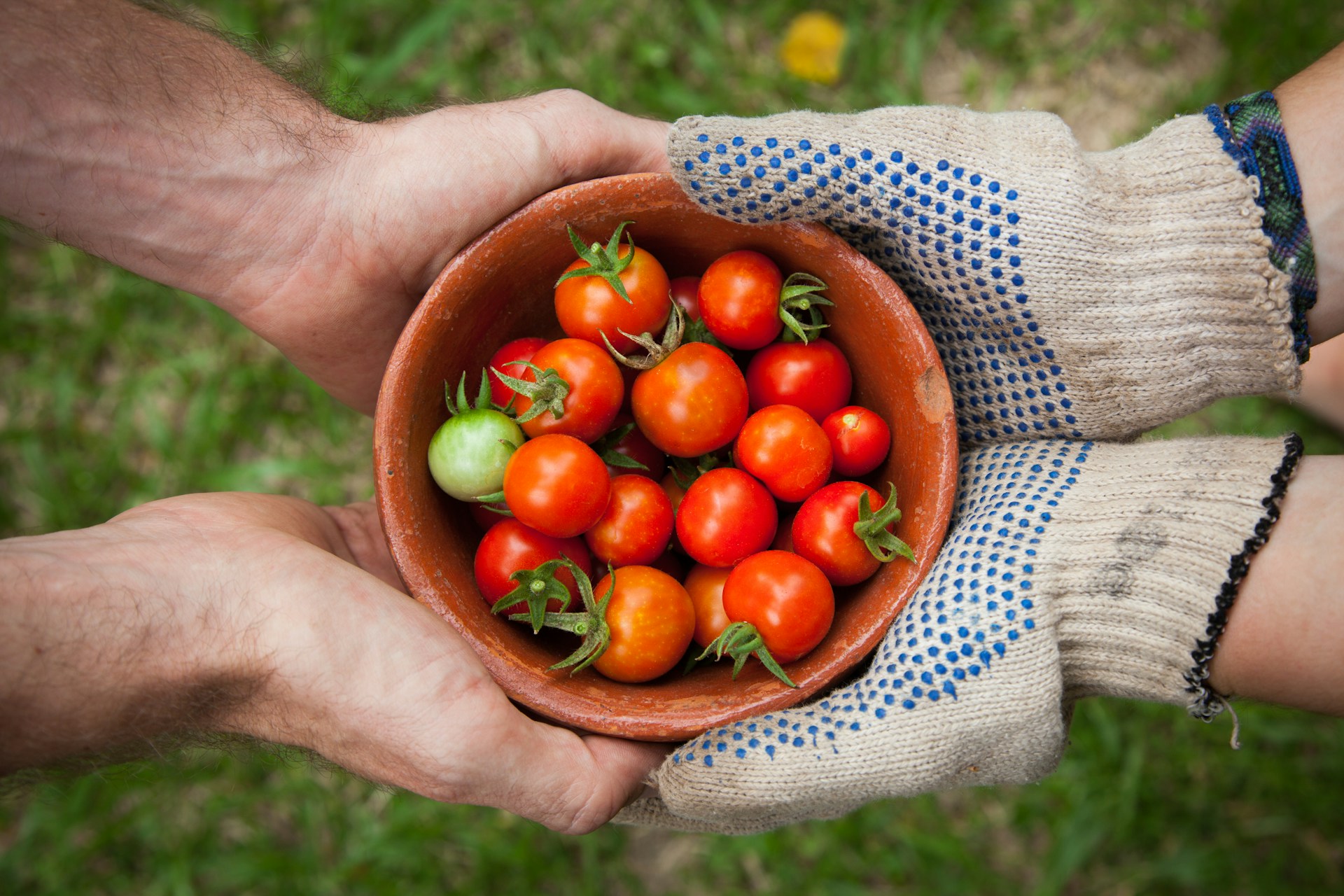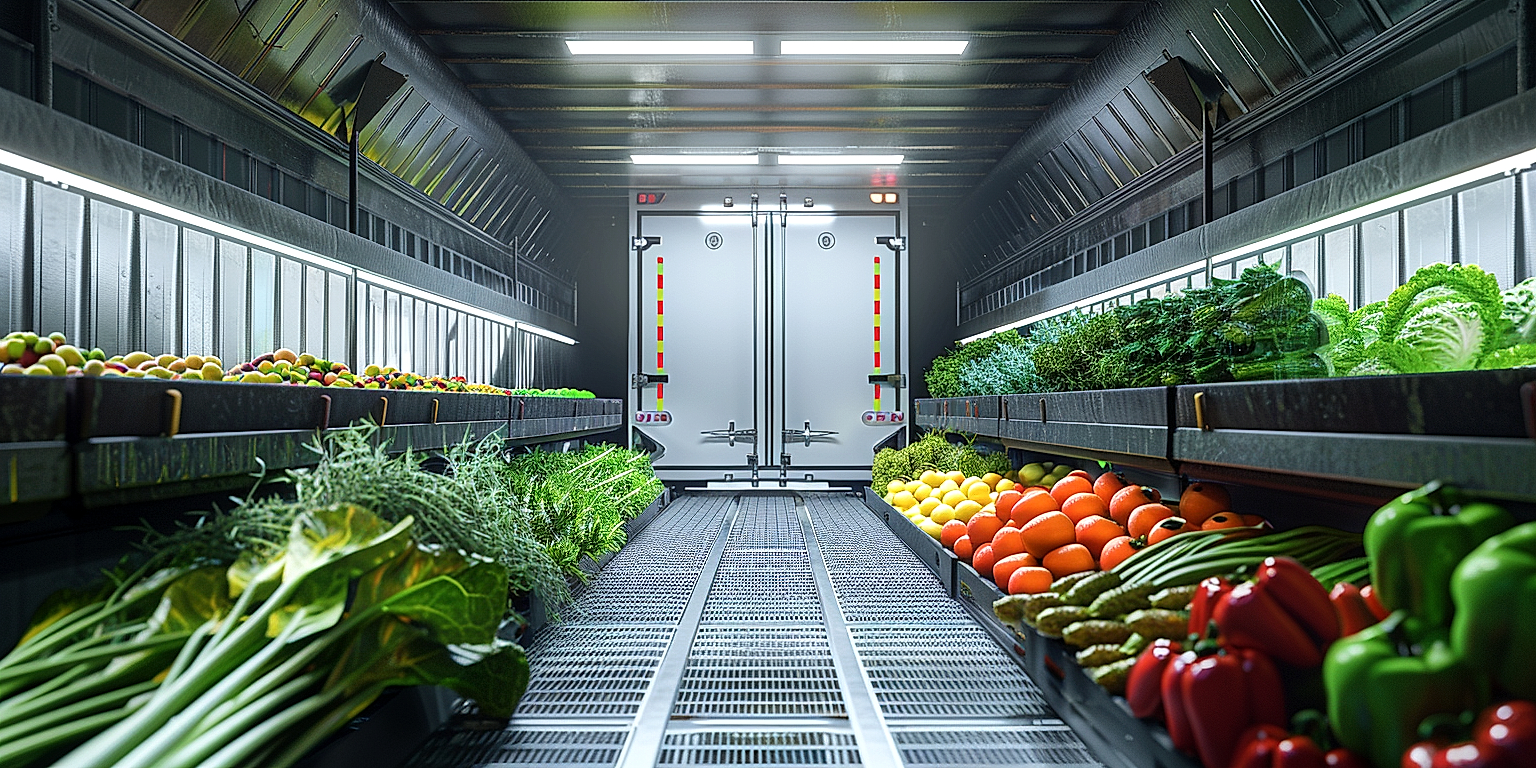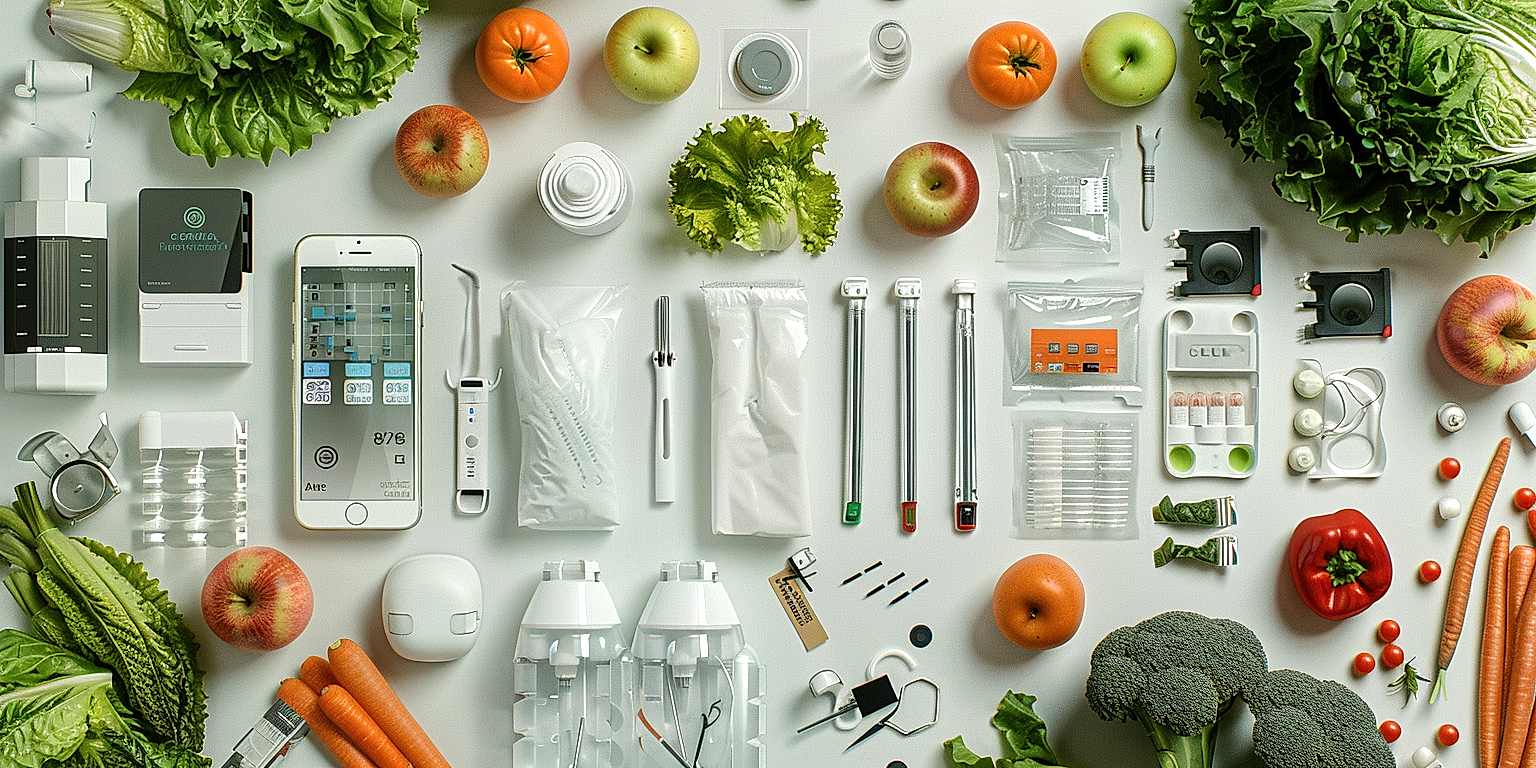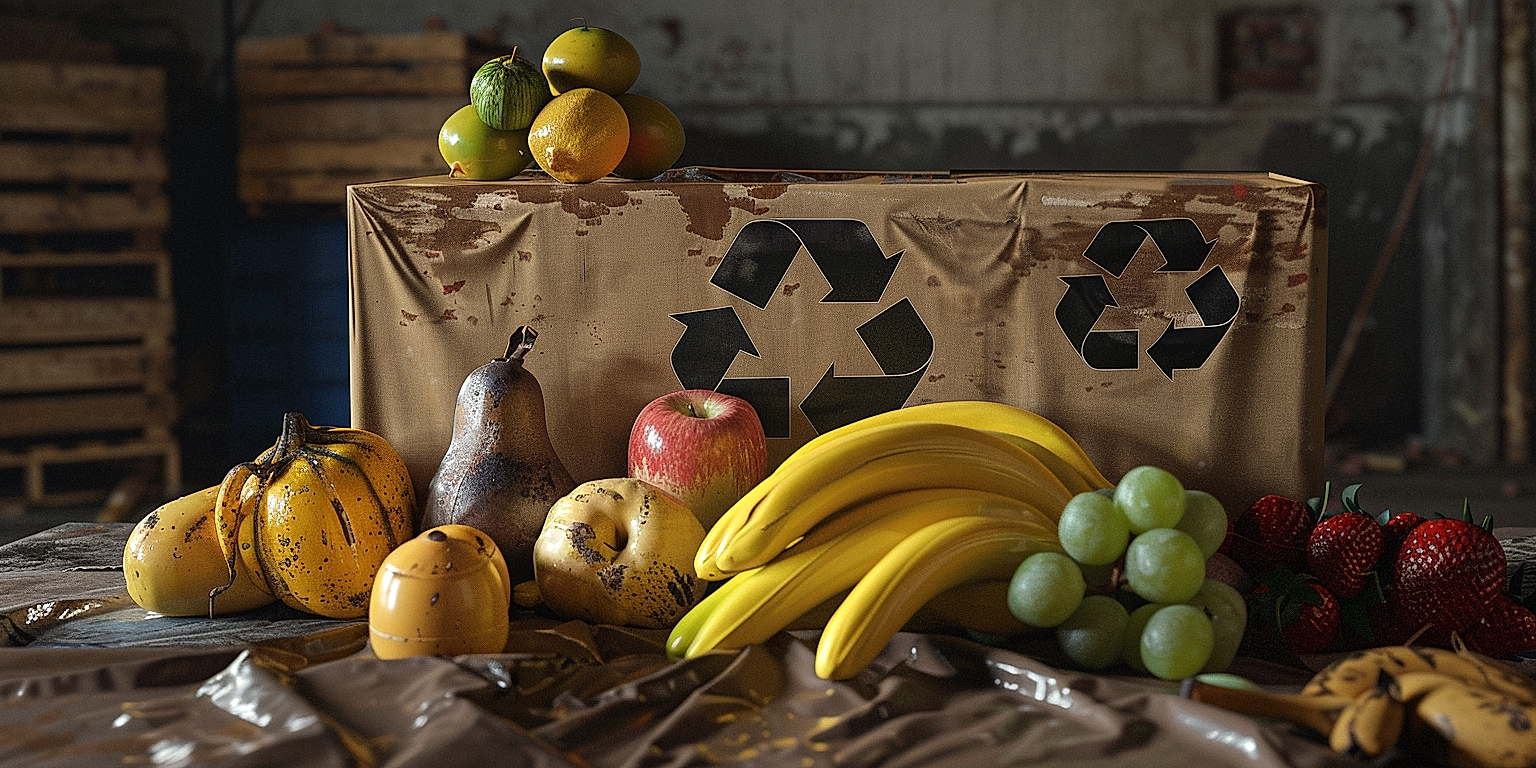In the produce industry, food safety is a paramount concern at every stage of the supply chain.
It plays an integral role in keeping our fruits and vegetables free from harmful pathogens that could lead to food-borne diseases.
The challenges in assuring food safety can be particularly complex during the shipping phase.
Several factors, such as safe handling procedures, transportation conditions, and quality control measures, influence its success.
Understanding and implementing the best practices for shipping produce can help minimize potential risks and ensure that fresh, safe, and high-quality products are delivered to consumers.
Let’s delve deeper into some strategies to optimize food safety during the transport of produce.
Contents
- Tips For Ensuring Food Safety In Produce Shipping
- 1. Always store produce at recommended temperatures.
- 2. Regularly sanitize all shipping equipment.
- 3. Thoroughly check produce for spoilage before shipping.
- 4. Maintain Cleanliness During Packing and Handling
- 5. Separate Different Types of Produce to Avoid Cross-Contamination
- 6. Use food-grade packaging materials only
- 7. Ensure traceability for recall situations.
- The Bottom Line
Tips For Ensuring Food Safety In Produce Shipping
1. Always store produce at recommended temperatures.
Ensuring that produce is stored at the recommended temperature is an essential step in maintaining food safety in produce shipping.
This factor contributes to preserving the quality and texture of the fruits and veggies, making them more appealing to consumers.
Apart from appealing aesthetics, keeping produce at correct temperatures helps lower the risk of foodborne illnesses.
Each type of fruit and vegetable has its ideal storage temperature that must be adhered to.
Researching on the specific temperature requirements of each produce type you’re handling, and investing in temperature-controlled storage spaces, such as refrigerated warehouses, can help ensure these guidelines are met.
For instance, leafy greens like lettuce or spinach should be kept at temperatures close to 32°F to maintain freshness and prevent wilting, while potatoes and onions should be kept at warmer temperatures, generally around 50°F.
It is not only temperature that should be monitored but also the humidity levels inside the storage spaces.
Many types of produce require specific humidity levels to maintain their freshness, texture, and quality.
Certain fruits such as bananas and avocados need lower humidity levels, while others like strawberries and blueberries need higher humidity environments.
Notably, overly high humidity can actually promote mold growth, which can quickly render a whole shipment unusable.
Installing humidity-controlled systems, in addition to temperature-controlled ones, in your storage spaces may be an additional measure worth considering.
However, these measures are essentially moot if there is no process in place to regularly monitor and record these variables.
Regular monitoring ensures that the produce is being stored at its ideal conditions, and recording this information allows for easier troubleshooting if any issues arise with the shipment’s quality.
Another significant aspect to consider is the effect of temperature fluctuations during transit, which can drastically affect the quality of the shipment.
Keeping temperature records during transit is an excellent way to tackle this challenge and is a common practice in today’s produce shipping industry.
On top of these efforts, it is crucial to educate the employees about the importance of temperature control in preserving the safety and quality of the produce, to ensure appropriate measures are taken at all stages of the shipping process.
2. Regularly sanitize all shipping equipment.
Shipping equipment in the produce industry is a critical conduit for maintaining food safety.
Thus, it is imperative that these are sanitized regularly to prevent any risk of contamination.
Unfortunately, contaminated equipment is a common cause of harmful bacteria and pathogens finding their way onto fresh produce.
These pose a significant health risk to consumers and can lead to serious foodborne illnesses.
Sanitization of shipping equipment is a primary measure in ensuring that the risk of contamination is reduced significantly.
There are professional cleaning products specifically designed for use in food processing and shipping that should be utilised.
In addition to killing harmful bacteria, these products are safe for use around food and will not harm the produce or leave a residue.
It is essential to ensure that all equipment is sanitized thoroughly and regularly.
This includes everything from storage containers and shipping crates to tools used in packing and transportation vehicles themselves.
It is also advisable to maintain a regular cleaning schedule with strict adherence to ensure no equipment is missed or cleaning is delayed.
Workers must be appropriately trained on the best practices for cleaning and sanitizing equipment, including the recommended use and safety aspects of cleaning products.
Sanitizing products also offer the benefit of deodorizing shipping equipment, reducing the chances of unwanted smells contaminating the produce.
Regular audits and inspections can help ensure that sanitation protocols are being followed and equipment is maintained to the highest standard of cleanliness.
It’s crucial to remember that cleaning and sanitizing are two different processes and both need to be properly executed.
Last but not least, let’s emphasize that an investment in sanitation now can save a business significant losses in the future.
3. Thoroughly check produce for spoilage before shipping.
Inspecting produce before it’s shipped is an essential step in ensuring food safety.
This requires that diligence and care are exercised at all times.
Every piece of fruit or vegetable should be examined for signs of spoilage.
This can be seen in different forms such as discoloration, bad odors, or even mold.
Only produce that passes this thorough inspection should be allowed for shipping.
In order to conduct this thorough examination, the fruits and vegetables need to be handled with cleanliness and care.
To ensure this, employees should be equipped with appropriate hygiene gear such as gloves and clean work uniforms.
This shows that the process of checking produce for spoilage is not just about identifying bad produce but also about preventing contamination.
Identifying and discarding spoilt produce is a way to prevent foodborne illnesses that could potentially harm consumers.
However, this process should not just be left to visual inspections alone.
There are also other useful methods such temperature checks and moisture inspections that can be adopted.
Such additional measures can detect early stages of spoilage that are not visibly noticeable.
In addition, the use of trained inspectors or even advanced technologies such as spectral imaging or hyperspectral cameras can greatly improve the accuracy of these inspections.
With the right approach, a meticulous check for spoilage can significantly contribute to preserving the freshness and most importantly, the safety of produce before it leaves for shipping.
This detailed process should be given its due importance as it is a significant step in ensuring the safety and quality of the produce that reaches the consumers.
4. Maintain Cleanliness During Packing and Handling
The importance of maintaining cleanliness during the packing and handling of produce cannot be overstated, as this directly impacts the safety of the food being shipped.
Good hygienic practices need to be followed at all stages of the produce shipping process.
This includes not only the direct handling of the produce, but also ensuring that the environment where it’s packed is clean. Utilizing proper cleaning procedures on a routine basis is essential in eliminating potential contaminants.
Items such as tables, utensils, machines, and containers that come into direct contact with the product should be sanitized routinely.
Employees should be required to follow strict hygiene protocols that include washing hands often and wearing appropriate personal protective equipment like gloves and hairnets.
Produce should ideally be handled as minimally as possible to limit damage and reduce the need for intensive cleaning.
Cleaning chemicals should be used and stored correctly. They should also be food-grade safe and should not pose a risk of contamination to the produce.
Monitoring protocols should be established to ensure that these cleanliness measures are being followed consistently.
Any breaches in cleanliness practices should be addressed immediately to prevent cross-contamination and the growth of harmful bacteria.
It is also advisable to utilize a disease and pest control program, which would regulate the condition of the produce and prevent it from getting infested.
In addition, a good pest control program can help prevent rodents and insects from infesting areas where the produce is stored, packed, and shipped.
Another important consideration is the cleanliness of the transportation vehicles.
Vehicles used in shipping produce should be cleaned and inspected regularly to prevent possible cross-contamination of products.
Cleanliness goes beyond just physical cleaning, and also includes training of personnel, proper waste disposal, and maintenance of equipment.
Ensuring cleanliness during packing and handling is thus a key aspect of the overall strategy to ensure food safety in produce shipping.
5. Separate Different Types of Produce to Avoid Cross-Contamination
The importance of separating different types of produce during shipping cannot be underestimated as this significantly contributes to avoiding cross-contamination.
When different types of produce come into contact, there’s a risk of cross-contamination, leading to potential foodborne illness.
While this may seem like a simple measure, separating different types of produce is actually one of the most integral steps in maintaining food safety.
While it may be tempting to save space by packing similar sized fruits or vegetables together, one type of produce may carry bacteria or fungi that another type is susceptible to.
It’s not just a matter of separating different species of fruits and vegetables – even different cultivars of the same species can cross-contaminate each other.
Separating produce also applies to produce that is fully ripe and those that are not yet ripe.
Fully ripe fruits and vegetables are more prone to spoilage and could potentially spread bacteria and fungi to less ripe produce.
Equally important is ensuring that damaged or spoiled goods are removed and disposed of properly so that they don’t compromise the rest of the shipment.
One way to separate produce is by using pallets or crates for different types of produce.
These can be cleaned and sanitized between shipments, further reducing the risk of cross-contamination.
Color-coded crates can also be used for better organization and easier identification of different types of produce.
Remember to also sanitise these color-coded crates regularly, as germs can transfer from one crate to another.
Another strategy is to label and segregate areas of the shipping vessel for different types of produce.
Just like crates, these areas must also be sanitised regularly and extensively, especially between shipments of different types of produce.
Re-training staff regularly on the importance of produce separation and its best practices is also a crucial step to ensure food safety in produce shipping.
6. Use food-grade packaging materials only
In the realm of produce shipping, it is essential to use only food-grade packaging materials.
This requirement is crucial for ensuring food safety, as the materials you use can have a significant effect on the freshness and quality of the produce.
The nature of these materials can determine the extent of possible contamination during the shipping process.
General consumer safety is also highly dependent on the quality of your packaging materials.
The consequence of not adhering to this guideline can lead to a multitude of problems, including illnesses and foodborne diseases.
This requirement is crucial for ensuring food safety, as the materials you use can have a significant effect on the freshness and quality of the produce.
Using food-grade packaging materials ensures that the contents remain uncontaminated during transportation.
These materials are specifically designed to prevent the interaction between the packaging and the food it contains.
Any form of interaction could lead to chemical leaching that may cause the food to become unsafe for consumption.
Therefore, choosing the right packaging materials is not something that should be taken lightly by any business involved in the transportation of fresh produce.
Food-grade materials tend to be high in quality, ensuring that the produce remains safe and healthy during its journey from farm to table.
These are also subject to strict quality standards and regulations, further ensuring the safety of the food.
These materials should be free from any harmful substances like lead, mercury, or cadmium which can cause serious health problems if ingested.
Using food-grade packaging materials is a critical consideration for anyone involved in the produce shipping industry.
After all, ensuring the safety and health of consumers should always be the top priority, regardless of the type of food being shipped.
Through the diligent use of food-grade packaging, produce shippers can significantly decrease the risk of food contamination, keeping their produce and, ultimately, their consumers safe.
7. Ensure traceability for recall situations.
Ensuring traceability in produce shipping is a crucial aspect of maintaining food safety standards.
The ability to trace the path of a product through its life cycle, from production to distribution, is critical when problems occur.
This is particularly relevant in recall situations.
A well-established traceability system can help to promptly identify the source of a problem, isolate affected goods, and deploy an effective recall, minimizing the impact on public health and company reputation.
By establishing a traceability system, businesses can not only ensure food safety but also enhance accountability and transparency in their shipping processes.
Such a system requires rigorous documentation, including specifics on the harvesting, handling, and shipping methods, to provide a clear trail to follow in the event of a recall.
In addition, it is recommended to apply a global standards one (GS1) or similar barcodes on the packaging, which can support traceability efforts.
It is also necessary to adopt a lot tracking system, which helps in identifying and isolating the specific batches of produce in case of a contaminated shipment.
Moreover, businesses need to incorporate digital solutions in their operations, utilizing software that can automate the documentation process, ensuring accuracy and ease in tracking.
Furthermore, efficient communication with all players in the supply chain – from the farm to the retailer – is essential to ensure accurate real-time tracking.
Ideally, businesses should test their traceability systems regularly by conducting mock recall exercises to identify any gaps in the process that need addressing.
While establishing a robust traceability system can require significant effort and resources, its importance cannot be overstated, particularly in light of the potential damages a mishandled recall could inflict on a business.
In conclusion, establishing a traceability system for recall situations is a fundamental practice in ensuring food safety in produce shipping.
It promotes accountability, transparency, and can protect both the public’s health and a company’s reputation.
The implementation and regular testing of these systems are integral to ensuring the highest standards of food safety are maintained within the produce shipping industry.
The Bottom Line
Maintaining the integrity and safety of shipped produce requires a comprehensive and diligent approach.
Ensuring the produce is stored at recommended temperatures, regular sanitization of shipping equipment, thorough inspections for spoilage, cleanliness during packing, separation of different items to avoid cross-contamination, usage of food-grade packaging materials, and a robust traceability system are vital measures that cannot be overlooked.
Upholding these practices guarantees not only the quality of the produce but also protects consumers’ health, thus bolstering the reputation of the supply chain.
Good practices ultimately enable a seamless, transparent, and trustworthy process from farm to fork.




